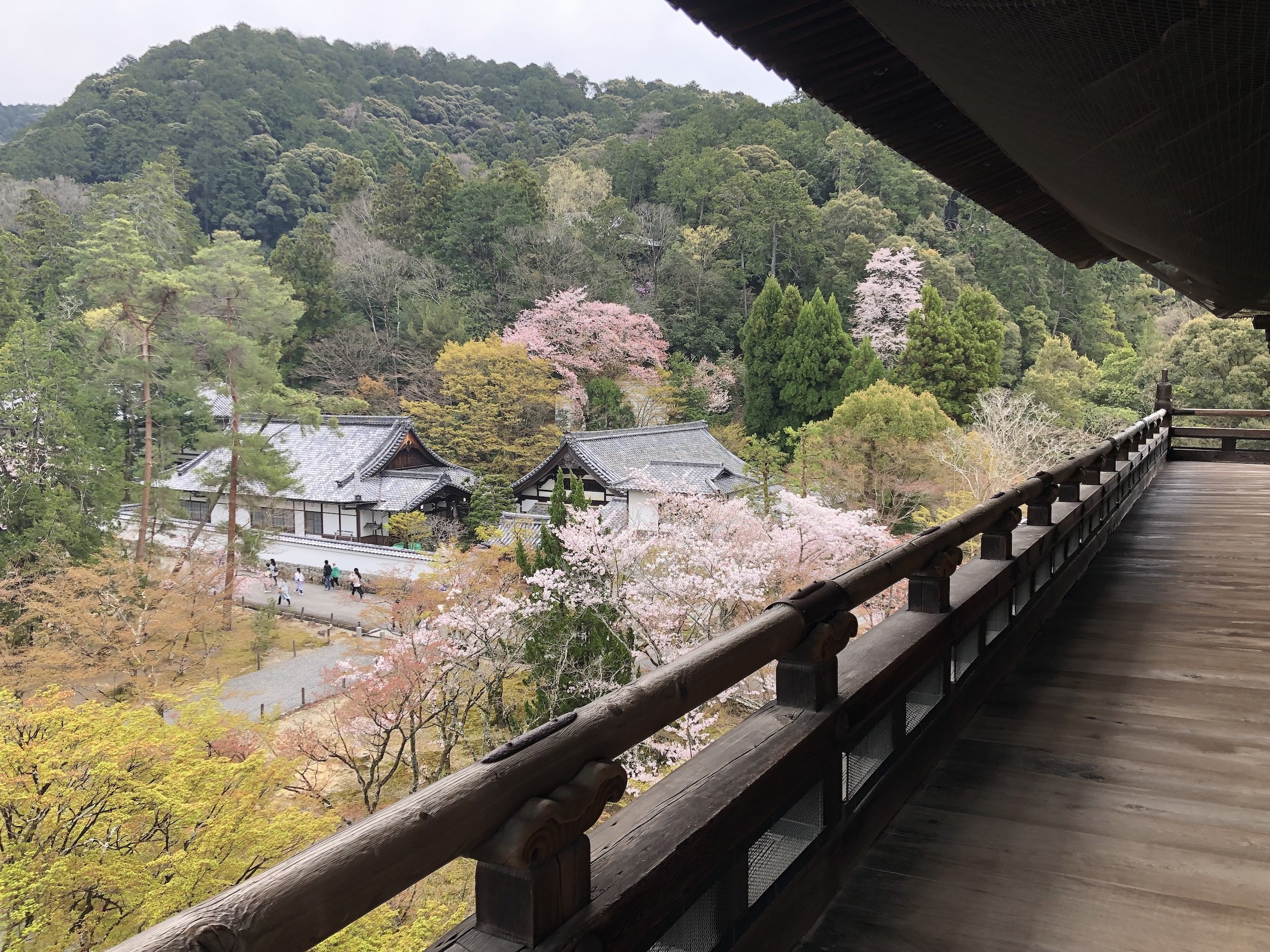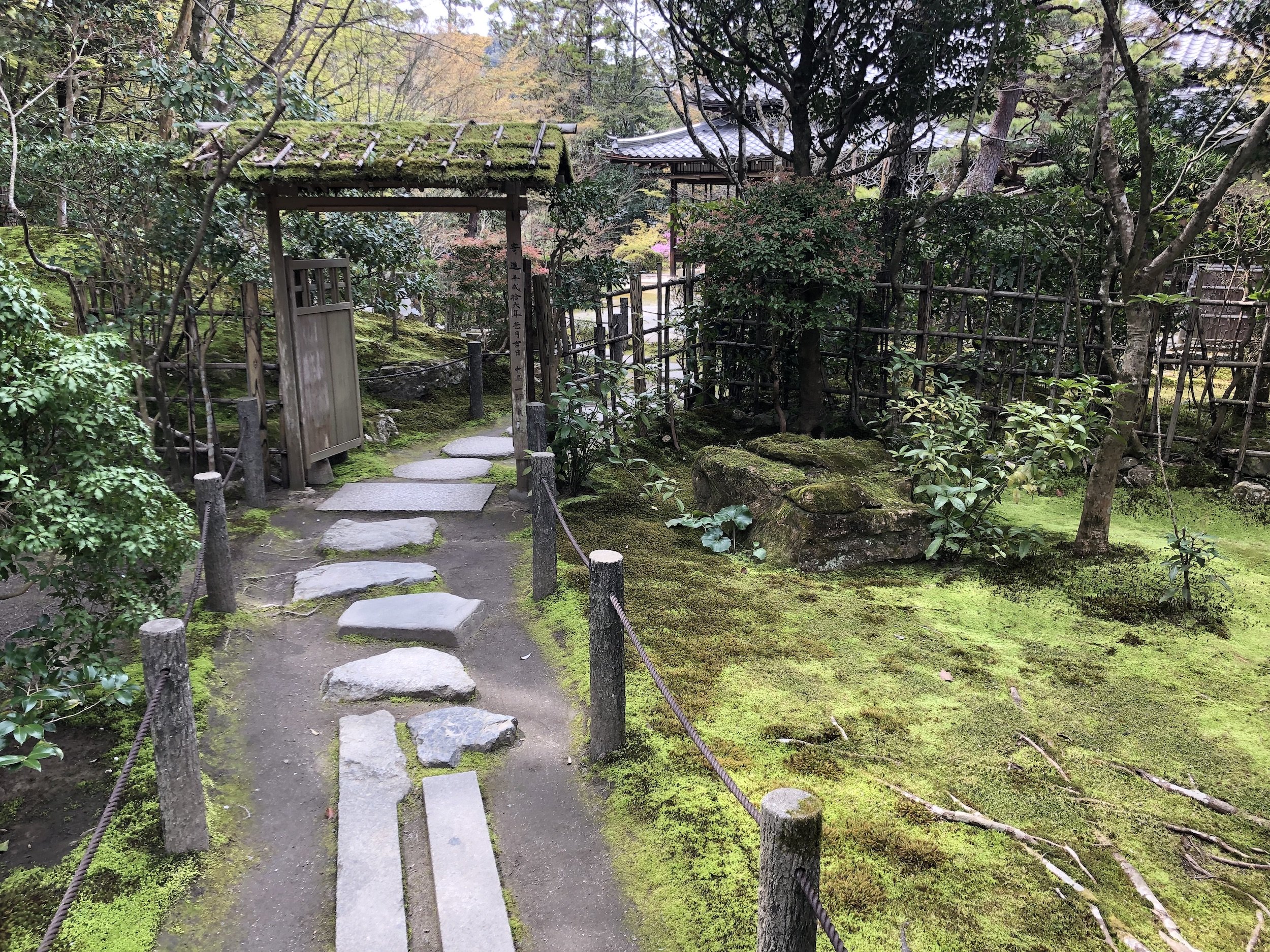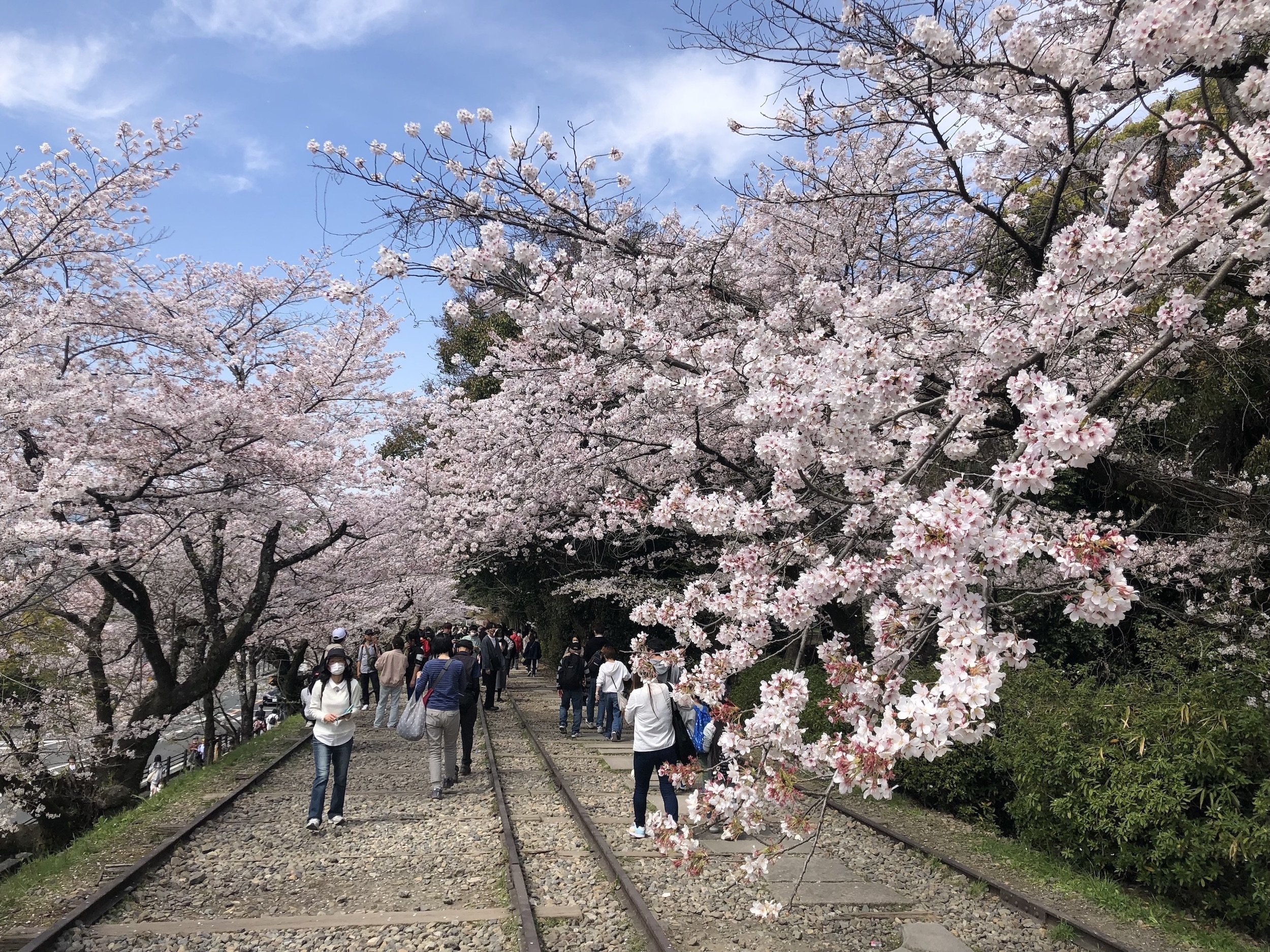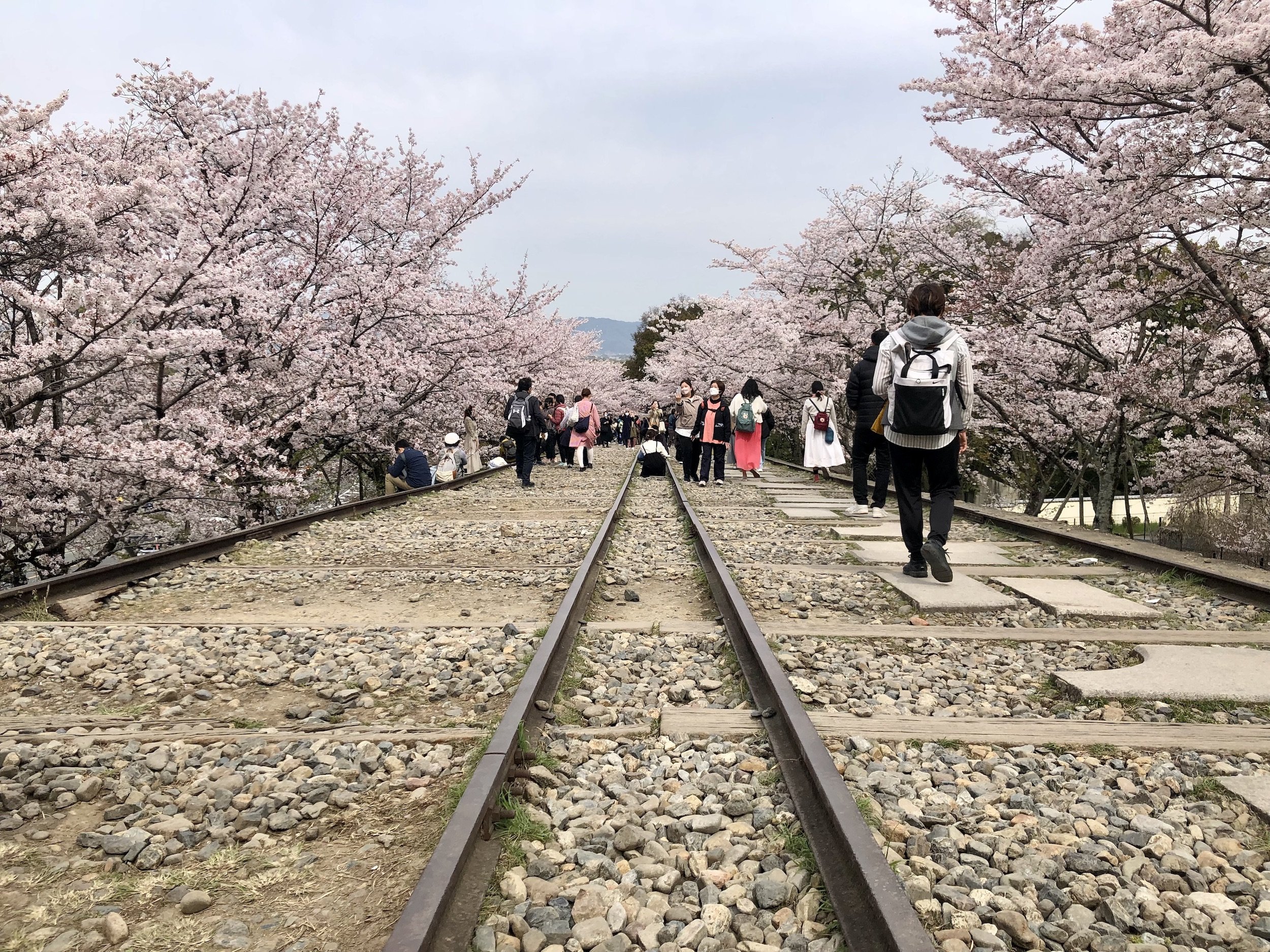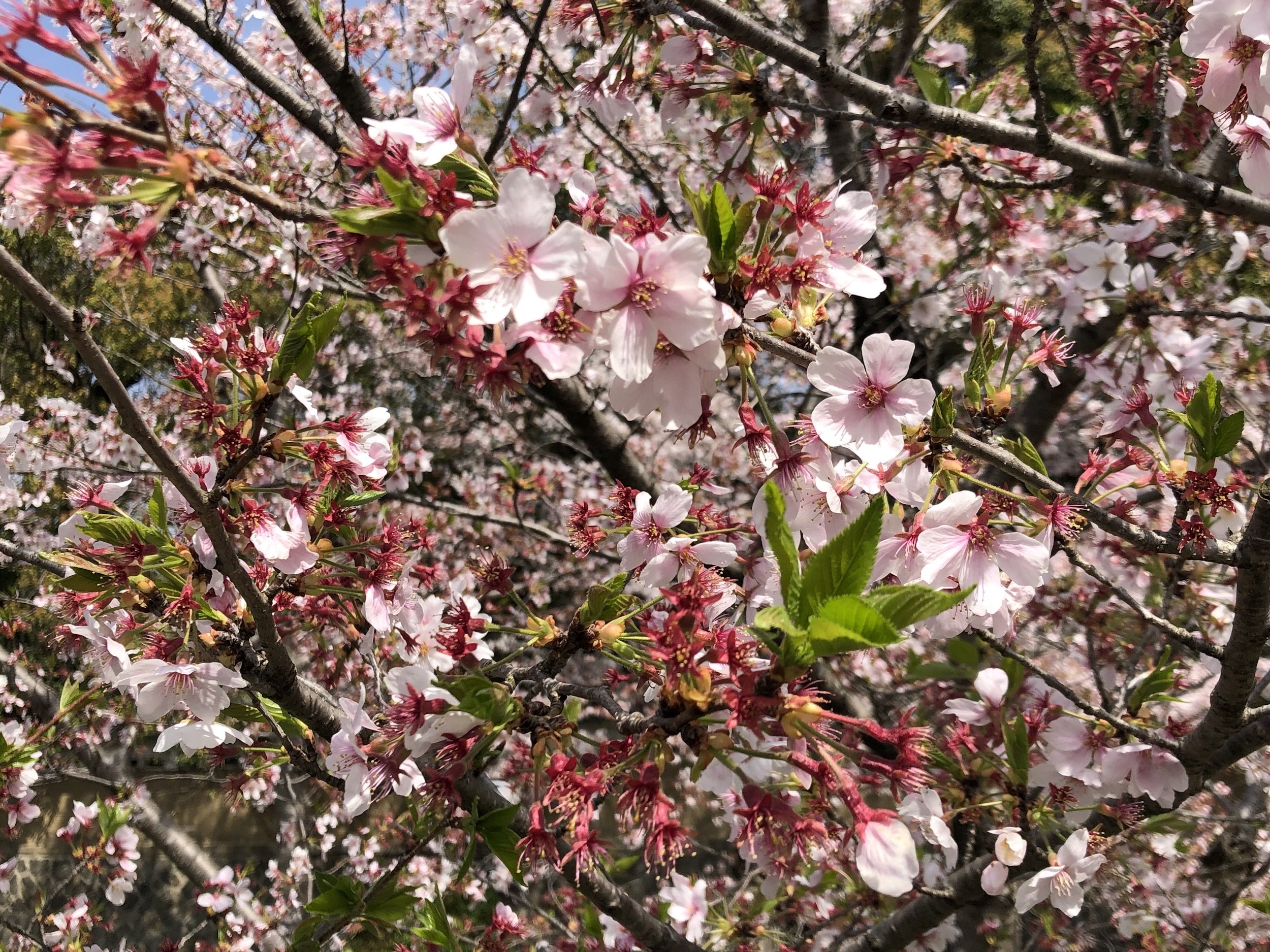In Kyoto, if you want to avoid the gaggle of tourists packed into slow-moving buses, it can be more comfortable now to ride the subway sometimes. Nanzenji is one famous temple located within walking distance of the subway, and when you exit Keage Station in late March or early April, you’ll have the option of walking along the railway tracks to do some cherry blossom viewing on the Keage Incline.
Sanmon Gate at Nanzenji in Kyoto
Nanzenji is a Zen Buddhist temple that originally dates back to the 13th century, though it’s been destroyed by fires and rebuilt several times since then. It started out as a retirement villa for the emperor before it became a temple, the main grounds of which are now free to enter.
One of the first big sights you’ll see at Nanzenji is Sanmon Gate, which stands about 72 feet tall. You can climb to the balcony at the top of this entrance gate and enjoy a 360-degree, scenic lookout over the temple and surrounding area (though that part does carry a modest fee of ¥600).
On this trip to Kyoto, we visited another temple, Chionin, which also has its own 78-foot gate that goes by the same name, Sanmon. Its balcony was open to visitors, too, but apparently, that’s not usually the case. They only open it for special events like the spring sakura illumination.
Nanzenji is different in that it’s open year-round. The only closing dates posted on the temple website are the last few days of the year, December 28–31.
I’ve seen plenty of other wooden entrance gates like this in Japan, including Nandaimon at Todaiji Temple, which I posted about just last week. But until Nanzenji, I had never climbed one. If you’re there and can brave the steep staircase up to the balcony, Sanmon Gate offers a commanding view.
The Aqueduct (Suirokaku) and Tenjuan
Another notable feature of Nanzenji is its brick aqueduct, the Suirokaku, which facilitates the passage of water between Kyoto and Lake Biwa. It’s not necessarily the first thing you’d expect to see at a Buddhist temple in Japan, and that may be because it’s built in the Roman style, according to GaijinPot Travel.
You can also climb the aqueduct in at least one place and see the water flowing along the top of it. I had seen pictures of the Suirokaku online, and Azusa had seen it on TV, which is what made us want to visit Nanzenji in the first place. Sanmon Gate was really just a bonus, as was the sub-temple Tenjuan and its koi-filled pond and garden.
The English pamphlet for Tenjuan notes that “around 1288, the emperor was vexed by the appearance of a ghost” at Nanzenji and had to call in a priest to perform an exorcism. Had Azusa known about the haunted history here, I don’t know if she would have named Tenjuan her new favorite temple in Kyoto, now that her old favorite, Kodaiji, has more visitors milling about in it and isn’t such a secret oasis anymore.
Tenjuan is a nice spot to get away from the outside crowds and enjoy some peace and quiet. Like Sanmon Gate, it has a small admittance fee. (I say this for the benefit of budget travelers, as it’s only ¥500).
Cherry Blossom Viewing on the Keage Incline
Just around the corner from Keage Station is an incline railway that once serviced boats on wheeled platforms called Sanjukkoku-bune. The boats would load into the Lake Biwa Canal and carry cargo to the neighboring Shiga Prefecture.
The Keage Incline now serves as a popular cherry blossom viewing spot in the springtime. It was fairly crowded when we were there, with people periscoping selfie sticks and couples doing wedding photos. So, don’t expect to get a perfect shot of cherry blossoms over the train tracks with no people, like you might see on some travel sites promoting the Keage Incline.
Similar to the aqueduct, another vestige of bricks in the vicinity is Nejirimanpo (translation: “Twisted Tunnel.”) It’s a skew arch tunnel, built at an angle under the incline, with bricks laid in spirals to fortify it. You’ll pass through this tunnel on your way back to Keage Station, where you can catch the Tozai Line to other local stops like Higashiyama or Nijojo-mae, which provide access to two other major Kyoto landmarks, the Heian Shrine and Nijo Castle.




